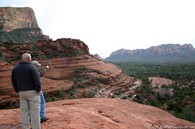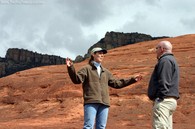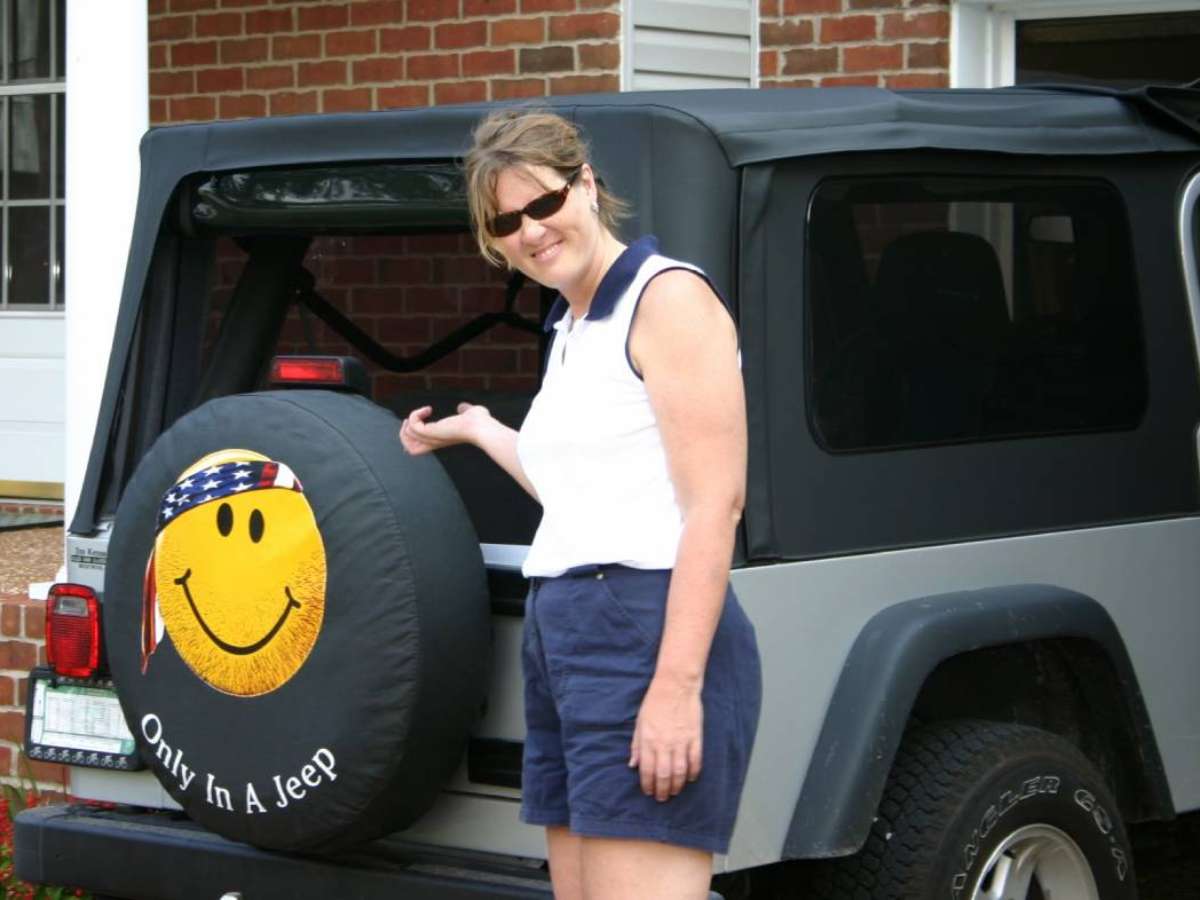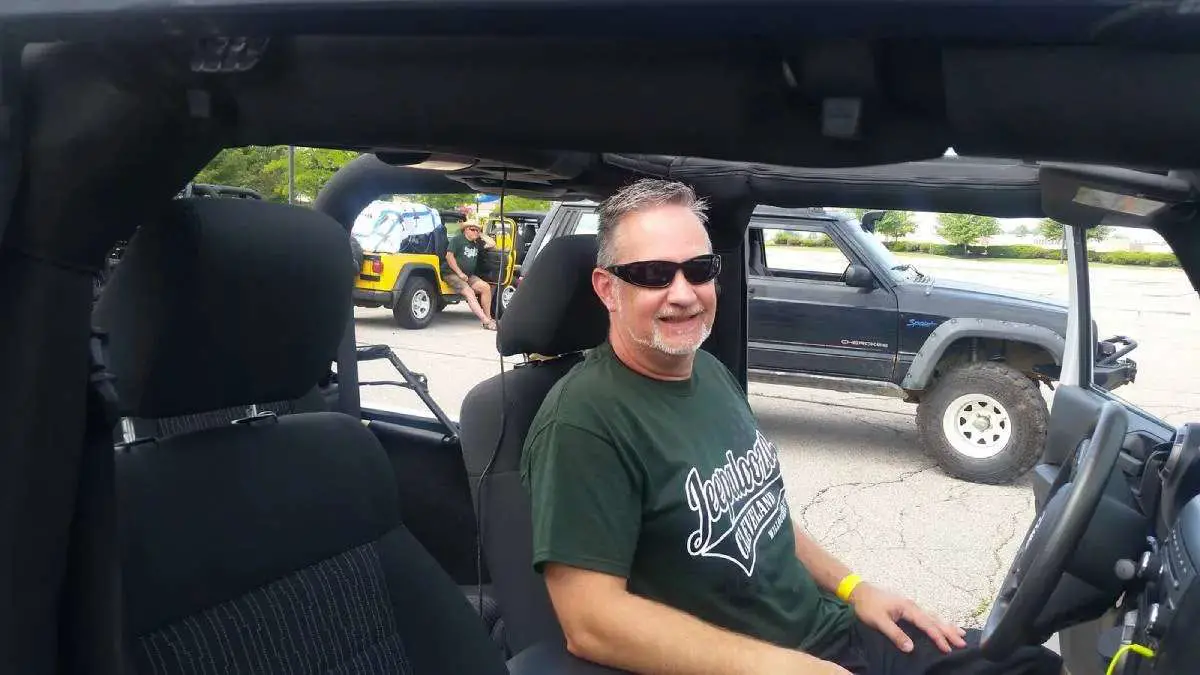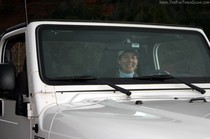 Ever wonder what it’s like to be a Jeep tour guide?
Ever wonder what it’s like to be a Jeep tour guide?
Arguably, Sedona, Arizona is the Jeep tour capital of the world. With the great weather, gorgeous scenery, and easy access to a myriad of trails, no wonder there are so many tour companies.
I’m a Jeep tour guide in Sedona, and many people think that this would be a dream job. If you are one of those, read this first!
Here’s everything you want to know about Jeep tour guides, including how to get hired and what to expect your first days on the job.
Wanna Be A Jeep Tour Guide?
Many think it sounds like fun, and it is, for awhile. But, for most, the romance wears off quickly. The average career lifespan of a Jeep tour guide in Sedona is less than 2 years, but there are those who have been guiding for 5, 10, even 20 years.
- I have been in the Jeep tour business since 1996, which makes me about 96 in Jeep years.
- I have eaten enough red dust to be convicted of smuggling federal property.
- I have ushered thousands of visitors into the backcountry.
- I have grown tired of the sound of my own voice.
- I have watched Jeeps go from the showroom floor… to tour status… to beyond reasonable maintenance and relegated to the Jeep retirement lot with 150,000 trail miles on them.
- I have hosed off various types of excrement from Jeeps.
- And I have seen guides in training, passed by them on the trail for awhile, then saw them eventually move on to a “real” job.
Let me give you some insight to the whole world of professional Jeep tour guiding, from start to — finish.
First of all, it takes a certain type of person to really be a guide, as an ongoing career. Most “career” guides are very serious nature and history lovers. They drive Jeeps all week, then spend their days off hiking, biking, or even Jeeping. They love to read. They have heated debates with their associates about the current scientific name of the javelina, the best way to eat agave, or the latest tour joke. They are clever, independent, resourceful, animated, and loud. They are very much people-people — they love to entertain and be the center of attention. And they can deal with a great deal of ups and downs, not just on the trail, but also in their schedules and bank accounts.
The Interview Process
The first thing tour guide hopefuls should know is that fewer than 50% of applicants will even get an interview, due to the sheer volume of applications. When I was a Jeep tour trail boss, my interview technique consisted primarily of trying to talk the applicant out of the job. I would tell them all of the disadvantages of the job, like bouncing around all day long, eating dust in the heat, or getting drenched in the freezing rain — all the while, being charming and entertaining, and answering the same questions you have heard a thousand times.
Some applicants are dismayed by the fact that there are no fixed paid hours. Guides are paid by the hour only for driving tours, on a rotating schedule, and at the whim of the weather and tourism flow. Some applicants are even distressed to learn that they have to wash their own Jeeps. If none of that seems to phase them, we move on with the interview.
Personality is Everything
Jeep tour companies are looking for personality first. They want someone who is responsible, yet entertaining; informative, yet interesting; and safety-conscious, but fun. Many of these traits may seem contradictory, but they are what make a good guide.
And, contrary to popular belief, guides are not hired for their four-wheeling prowess. In fact, personality, not off-road experience, is the single most important factor in guide selection. There are some really great four-wheelers who will never make the cut as a guide. Likewise, there are many great guides who were hired without any previous four-wheeling experience.
The priorities of most tour companies fall in this order: first, safety; second, entertainment; third, education.
What Happens To Applicants Who Do Make The Cut?
Training, training, training — which may take anywhere from 2 to 12 weeks, depending on the trainee’s previous experience. Trainees must learn about local history, geology, ecology, environmental etiquette, company policies & procedures, and, yes, how to drive a Jeep. No matter how many years of 4×4 experience a trainee has, there are many things that must be learned to manage the responsibility of driving a “heavy” Jeep with paying guests as a fulltime job. Most companies don’t pay for training time, either — that, alone, tests the resolve of the trainee.
Training involves lots of studying. Jeep tour companies each compile their own guide training manuals, which include company policies and area information. A trainee should also spend a lot of time at the library, the historical society, and area parks. Most companies will expect you to know more about the area than you will ever be able to share in one 2-hour tour, but you need that depth of knowledge from which to draw. Veteran guides have forgotten more than most people will ever know about the area, and rookies will still be expected to be able to discuss at length the virtues of the agave, or the patterns of geological erosion, or the effect of the World Series on the socio-economic structure of Sedona.
The key to ongoing success as a tour guide is to read a lot. Not only does it freshen your material for both you and your guests, but also it keeps your information congruent with current events and ongoing changes. Scientific names of animal species change, working geological theories evolve, and new archaeological discoveries emerge. Nothing is static — keep reading and exploring!
You’re Hired! Ride-Alongs Start, But Training Never Ends
The biggest mistake tour guides make is thinking that once they have been cleared to do tours, they know everything they need to know and are done training.
 My favorite step in Jeep tour guide training involves the infamous “ride-alongs”, where the trainee rides with veteran guides to observe their touring technique, presentations, and interaction between the guide and guests. It is my favorite because, invariably, a guide trainee will come to me and say “Joe said this about this, but Jane said that about this.” Presentation details vary from guide to guide, and it is important to do your own reading.
My favorite step in Jeep tour guide training involves the infamous “ride-alongs”, where the trainee rides with veteran guides to observe their touring technique, presentations, and interaction between the guide and guests. It is my favorite because, invariably, a guide trainee will come to me and say “Joe said this about this, but Jane said that about this.” Presentation details vary from guide to guide, and it is important to do your own reading.
Presentation, interpretation, and perception vary widely, so always check your facts. Otherwise, it can become like the telephone game: by the time a story filters through a handful of guides, it doesn’t even remotely resemble actual fact!
Interwoven with these ride-alongs will be hands-on four-wheel-drive training in a tour Jeep with the trainees and a trainer. Tour Jeeps handle much differently than a stock Jeep, and it takes some adjustment to become proficient at driving them — even if the trainee has Jeeping experience. As a trainee, remember that you are there to absorb as much as possible from the trainer, who is usually a very tour-experienced person.
Set your ego aside, please. Have the self-confidence to ask questions. Don’t act like the driving is part of the interview. You have already been hired, now the company wants to train you to a certain point in your ability to manage a tour Jeep. The only people who are dismissed during driver training are the ones who do not listen to the instructor. A tour company is putting a lot on the line by letting you drive one of their pieces of equipment on the company insurance policy with paying guests.
Each company has their own method of clearing a new guide for tours. Some companies have you do a tour with managers and senior guides on board (the worst possible passengers you could ever have), or some slowly wean you by having a veteran ride along with you for your first few tours. But, basically, you will be cleared to do tours when your driving and navigating are transparent, you project confidence and clarity in your information presentation, and you exhibit an easy-going control of your tour.
 Getting cleared to do tours does not mean that initiation is over. There is some hazing involved. In a small town, all the other Jeep tour guides know who the new guy is immediately, and the posturing can be downright juvenile. At times, I have compared the Jeep tour guide crowd to a pack of wolves — they establish a pecking order, and they can smell fear. But, for the most part, the tour guides from all of the companies are fun to work with, behave professionally on the trail, and are just good working people. One of the fun games guides play is coming up with new and clever banter to exchange when passing another tour Jeep on the trail.
Getting cleared to do tours does not mean that initiation is over. There is some hazing involved. In a small town, all the other Jeep tour guides know who the new guy is immediately, and the posturing can be downright juvenile. At times, I have compared the Jeep tour guide crowd to a pack of wolves — they establish a pecking order, and they can smell fear. But, for the most part, the tour guides from all of the companies are fun to work with, behave professionally on the trail, and are just good working people. One of the fun games guides play is coming up with new and clever banter to exchange when passing another tour Jeep on the trail.
The Inside Scoop On Pay & Work Hours
So, what can tour guides expect to make once they are trained? Most companies are paying anywhere from $11 per hour for rookies, up to $20 per hour for veterans. But a really good guide will nearly match his or her hourly wages in tips.
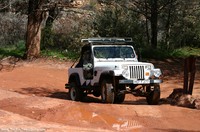 The downside is that guides only get paid for hours driving, and those hours can vary seasonally. This is not a job for people who need a steady income. The tour business has its peaks and valleys, which directly correlate to the weather and seasons. It takes self-discipline to save and adequately manage your finances. Among veteran guides, the saying ‘Winter is coming’ has a special meaning and foreboding.
The downside is that guides only get paid for hours driving, and those hours can vary seasonally. This is not a job for people who need a steady income. The tour business has its peaks and valleys, which directly correlate to the weather and seasons. It takes self-discipline to save and adequately manage your finances. Among veteran guides, the saying ‘Winter is coming’ has a special meaning and foreboding.
Most new guides begin in the spring, the busiest season of the year, where you spend as much as 10 hours a day in the Jeep. You barely get a chance to scarf down cold pizza or a power bar for lunch in between tours. After a long day of offroading, you’ll typically drive until dark, go home, fall asleep on the couch, then get up in the morning and do it all again — for about 10 days straight before you finally take a day off. Then 10 more days straight. This continues until May, when we get a little breather.
Summer days are really long and boring. You get one or two tours in the morning, then lie around for hours in the heat of the day. Eventually, everyone goes out for sunset tours, so you are driving until eight o’clock at night, then you come home, fall asleep on the couch, and do it all again tomorrow.
We endure the grueling days, because winter is always ahead. I advise new tour guides to sock away $20 a day during the spring and summer, in order to build enough of a winter supplement to survive. Most guides get through winter on peanut butter sandwiches and ramen noodles. Over the course of a year, a full time guide averages 25 to 30 hours per week, with the spring and summer kicking at 40 hours per week, and winter piddling in at as little as 10 hours per week, weather permitting.
The Fun Side Of The Jeep Touring Business
 In spite of the erratic hours and unstable finances, there are some amazing benefits, which cannot be measured by your bank account.
In spite of the erratic hours and unstable finances, there are some amazing benefits, which cannot be measured by your bank account.
- You get to spend most of your days outside.
- When you are on the trail, you are captain of the ship.
- You work with an amazingly sharp and entertaining group of people, upon which I am a sure a sitcom will be based someday!
- You meet people from all over the world and from all walks of life. I have toured people from Japan, New Zealand, Norway, South Africa, Ecuador, and New Jersey.
- I have toured with blind people, so we spent the tour talking about the sounds and smells of the forest.
- I have toured with deaf people, so I scribbled out rock formations, history, and jokes on a notepad for them.
- I toured with a family from Turkey who sent me a beautiful leather wallet as a thank you for the toy cap gun key chain I gave to their son as a memento of the “wild” west.
- I toured with a family from Manhattan whose 12-year-old little girl
had never picked up a rock before.- I have toured with numerous people who burst into tears at the sheer beauty of the scenery.
- I have watched elk spar, coyotes hunt, mountain lions stalk, hawks mate, bears scratch, and tour guides eat.
- I have answered questions like, “Why do they allow the animals to just run loose out here?” (The questions themselves are worthy of an entire book — coming soon!)
One thing’s for sure… If you love the outdoors, nothing can compare to the life of a Jeep tour guide.
What Happens To Most Jeep Tour Guides?
For some, it is something they are proud to say they have done, but are glad to have moved on to more sane and steady work. For others, it becomes a way of life.
The worst day Jeep tour guiding is better than the best day in an office!

